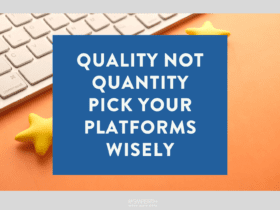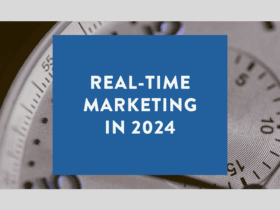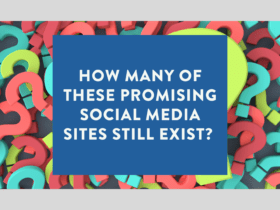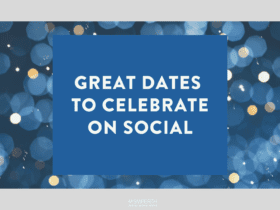In the early days of the pandemic, back when we were all hoarding toilet paper, a particular phrase seemed to spread faster than COVID-19 itself.
Let’s just call it the ‘We’re all in this together’ virus.
“During COVID we saw five million “all in this together ads”,” says infamous Perth creative director Rikki Burns. “It was the same slogan, the same music, the same, same, same,” says SMPerth director Meg Coffey.
While agencies clearly intended to give their consumers the warm and fuzzies, the effect was stultifying. As every brand seemed to adopt the trite phrase, consumers tapped out (and probably tapped onto TikTok).
So what do people really want in these – to use another Corona-cliché – unprecedented times?
How can we cut through the fluff?
And what’s the deal with TikTok anyway?
First, remember: we’re not all in this together.
The onslaught of ‘We’re all in this together’ ads weren’t just boring, says Meg. “They were tone deaf. We’re not all in this together – what’s happening here in Perth is very different from what’s happening in Melbourne. Now more than ever, personalisation is important.”
Drill down into your target market. Segment your advertising. Leave the one-size-fits-all marketing at the door.
While we’re on that, be a respectful digital houseguest.
“We can’t forget that social media belongs to the users,” says Rikki. “Advertising in someone’s feed is an intrusion into their space, so if you want to be liked after you’ve knocked down the door, you need to think about what you really have to offer them.”
Like making them laugh, for instance.
“You know what we all shared?” asks Rikki. “That awesome BCF:WFH EOFYS ad. Not because everyone’s really into tents, but because it was different. It gave the audience some levity, and a bit of credit to understand that we can still have humour in a serious situation.”
Be empathic. (Empty platitudes don’t count.)
“There are a lot of people going through hardship at the moment, so firstly we need to understand that brands are the least of their concerns,” says Rikki. “Having said that, we need to keep the lights on for businesses as well. The keys will be empathy, not getting in the way, not trying to sell people things they don’t need. Navigating tone has become more important than ever.”
Meg points to a recent Burger King ad that showed real abandoned fast food restaurants like McDonald’s and Wendy’s. While roasting its rivals has worked for Burger King before, it felt a bit icky in a post-pandemic world. “These are franchises, so you’re actually making fun of a small business, a broken dream,” says Meg. “A lot of people feel like it’s gone too far. We need to have a whole new level of consideration now.”
Use social media to actually, you know, socialise.
“Though the pandemic has sent usage through the roof, a lot of us found that news and share-bubble platforms like Facebook and Twitter can cause more stress than they numb,” says Rikki. “The messaging sides of these platforms however, have allowed us to connect through group chat in new and creative ways. Who knew watching a dodgy movie while chatting all the way through could make for a great Saturday night?”
And what about TikTok? “I think TikTok was always going to be big but I don’t think it would ever as been as huge as it was without COVID,” says Meg. “People were at home, they had time to be creative and create – it takes a fair bit of editing, rehearsal and practice. Brands can use TikTok to tell your story in your own authentic way – but don’t force it.”
According to Rikki, “The biggest winner for me has been TikTok. Not just because it’s a fun and upbeat time waster, but because it’s a platform for pure creativity. It allows people to make, share, and be involved in a community – all fundamental to human happiness”
Look after your neighbours.
“Locals are more important than ever, on so many levels,” says Meg. “Your neighbors are struggling. You need to be buying from their businesses, and be willing to pay a bit extra – now is not the time that we bargain. When you respect someone you pay full price.”
In terms of marketing, there’s no need to outsource to interstate or overseas agencies. “Check out the Revive WA campaign,” says Meg. “We have incredible minds here – why aren’t we using them?”
Cut through the data overload.
Naturally, we all spent a lot of time on our laptops in lockdown. Even the staunchest Luddites moved their marketing strategies online in pandemic panic. And data usage surged.
“Right now, we create more content each day than the equivalent of a million years of human existence,” says Meg. Let that sink in for a minute. “So the question is, how do you cut through the nose when that much content is being created?”
Her advice is simple: “Don’t create content just for content’s sake – post less, always go for quality over quantity. Keep your branding consistent, have a clear and concise message.”
To sum it up…
“I hope we come away from this being reminded that advertising, and content, is a transaction,” says Rikki. “You need to give the audience something (make them laugh, cry, think…) and in return they’ll give you their attention – and maybe a share if you’re lucky.
“Bullshit radars are on high alert, so be honest, be creative, be funny where appropriate (and sometimes where inappropriate), and if all else fails, at least hire some local creatives to make it look amazing.”









LET’S CONNECT